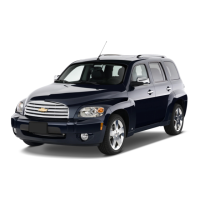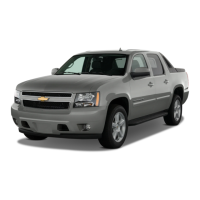Do you have a question about the Chevrolet 2011 Volt and is the answer not in the manual?
Overview of the vehicle's instrument panel layout and its components.
Key features for initial vehicle operation and interaction.
Information on various vehicle features and their operation.
Details on the high voltage battery, safety, charging, and efficiency tips.
Information on traction control, stability control, tire monitoring, and engine oil.
Information on vehicle keys, remote keyless entry, and lock operation.
Details on door operation, including the hatch and power locks.
Information on the anti-theft alarm system and immobilizer operation.
Description of convex mirrors, power mirrors, folding, and heated mirrors.
Information on the automatic dimming rearview mirror and its cleaning.
Details on power windows, express features, and safety warnings.
Proper installation and adjustment of head restraints for front and rear seats.
Instructions for seat adjustment, height, reclining, and heating features.
Information on folding rear seatbacks and safety belt guides.
Proper usage, pretensioners, care, and system checks for safety belts.
Details on airbag types, deployment conditions, and servicing.
Guidelines for securing older children, infants, and using LATCH systems.
Locations and features of storage compartments like instrument panel and floor console.
Information on additional storage options such as the cargo cover.
Diagram and labeling of the instrument panel components.
Details on steering wheel adjustment and controls, horn, wipers, and power outlets.
Explanation of various warning lights, gauges, and indicators on the instrument cluster.
Information on center stack display functions like power flow, charging, and energy data.
Controls and operation of exterior lamps, including automatic headlamps and signals.
Operation of dome lamps, reading lamps, and instrument panel illumination.
Features like entry lighting, exit lighting, and battery power protection.
Overview of the navigation system, radio, and audio player features.
Details on AM-FM radio operation, audio sources, and station finding.
Information on CD/DVD players, MP3, HDD, and auxiliary device compatibility.
How to use the navigation system, enter destinations, and manage routes.
Using voice commands for navigation, audio, and phone functions.
Bluetooth connectivity, pairing, and making calls using the infotainment system.
Overview of automatic climate control system operation and modes.
Operation and tips for using the vehicle's air vents for airflow direction.
Tips for maximizing energy efficiency, driving style, and acceleration/braking.
Procedures for starting, stopping, and using power button and Retained Accessory Power.
Explanation of Electric Mode, Extended Range Mode, and driver-selected modes.
Information and warnings regarding engine exhaust and carbon monoxide.
Description of the electric drive unit and shift lever operation.
Information on disc brakes, ABS, brake pedal travel, and emergency braking.
Details on Traction Control System (TCS) and Electronic Stability Control (ESC).
How to set, use, and end cruise control, including operation on hills.
Information on Ultrasonic Parking Assist system operation and detection.
Instructions for plug-in charging, delayed charging, and status feedback.
Information on service, parts, GM parts, and modifications.
Guidance on performing your own service work and checking various vehicle components.
Procedure for aiming headlamps if damaged or misaligned.
Instructions for replacing various exterior and interior bulbs.
Information on high voltage devices, wiring, fuses, and circuit breakers.
Details on tire inspection, pressure, rotation, and replacement.
General towing information, including flatbed and dolly towing procedures.
Guidelines for cleaning and protecting exterior and interior surfaces.
Importance of maintenance, dealer services, and general driving conditions.
Required services checklist for monthly and mileage-based intervals.
List of approved fluids, lubricants, and replacement parts for the vehicle.
A logbook to record vehicle service dates, odometer readings, and services performed.
Information on Vehicle Identification Number (VIN) and Service Parts Identification Label.
Capacities and specifications for engine, battery, fluids, and torque.
Steps to resolve concerns with dealership or Chevrolet, including BBB Auto Line program.
How to report safety defects to the US and Canadian governments and General Motors.
Information on Event Data Recorders (EDR), OnStar, Navigation, and RFID.
Details on OnStar system data recording, navigation system usage, and RFID technology.
Information on storing destinations and deletion instructions for the navigation system.
Explanation of RFID technology usage in vehicles for various functions.
FCC and Industry Canada compliance statement for vehicle RF systems.
Overview of the vehicle's instrument panel layout and its components.
Key features for initial vehicle operation and interaction.
Information on various vehicle features and their operation.
Details on the high voltage battery, safety, charging, and efficiency tips.
Information on traction control, stability control, tire monitoring, and engine oil.
Information on vehicle keys, remote keyless entry, and lock operation.
Details on door operation, including the hatch and power locks.
Information on the anti-theft alarm system and immobilizer operation.
Description of convex mirrors, power mirrors, folding, and heated mirrors.
Information on the automatic dimming rearview mirror and its cleaning.
Details on power windows, express features, and safety warnings.
Proper installation and adjustment of head restraints for front and rear seats.
Instructions for seat adjustment, height, reclining, and heating features.
Information on folding rear seatbacks and safety belt guides.
Proper usage, pretensioners, care, and system checks for safety belts.
Details on airbag types, deployment conditions, and servicing.
Guidelines for securing older children, infants, and using LATCH systems.
Locations and features of storage compartments like instrument panel and floor console.
Information on additional storage options such as the cargo cover.
Diagram and labeling of the instrument panel components.
Details on steering wheel adjustment and controls, horn, wipers, and power outlets.
Explanation of various warning lights, gauges, and indicators on the instrument cluster.
Information on center stack display functions like power flow, charging, and energy data.
Controls and operation of exterior lamps, including automatic headlamps and signals.
Operation of dome lamps, reading lamps, and instrument panel illumination.
Features like entry lighting, exit lighting, and battery power protection.
Overview of the navigation system, radio, and audio player features.
Details on AM-FM radio operation, audio sources, and station finding.
Information on CD/DVD players, MP3, HDD, and auxiliary device compatibility.
How to use the navigation system, enter destinations, and manage routes.
Using voice commands for navigation, audio, and phone functions.
Bluetooth connectivity, pairing, and making calls using the infotainment system.
Overview of automatic climate control system operation and modes.
Operation and tips for using the vehicle's air vents for airflow direction.
Tips for maximizing energy efficiency, driving style, and acceleration/braking.
Procedures for starting, stopping, and using power button and Retained Accessory Power.
Explanation of Electric Mode, Extended Range Mode, and driver-selected modes.
Information and warnings regarding engine exhaust and carbon monoxide.
Description of the electric drive unit and shift lever operation.
Information on disc brakes, ABS, brake pedal travel, and emergency braking.
Details on Traction Control System (TCS) and Electronic Stability Control (ESC).
How to set, use, and end cruise control, including operation on hills.
Information on Ultrasonic Parking Assist system operation and detection.
Instructions for plug-in charging, delayed charging, and status feedback.
Information on service, parts, GM parts, and modifications.
Guidance on performing your own service work and checking various vehicle components.
Procedure for aiming headlamps if damaged or misaligned.
Instructions for replacing various exterior and interior bulbs.
Information on high voltage devices, wiring, fuses, and circuit breakers.
Details on tire inspection, pressure, rotation, and replacement.
General towing information, including flatbed and dolly towing procedures.
Guidelines for cleaning and protecting exterior and interior surfaces.
Importance of maintenance, dealer services, and general driving conditions.
Required services checklist for monthly and mileage-based intervals.
List of approved fluids, lubricants, and replacement parts for the vehicle.
A logbook to record vehicle service dates, odometer readings, and services performed.
Information on Vehicle Identification Number (VIN) and Service Parts Identification Label.
Capacities and specifications for engine, battery, fluids, and torque.
Steps to resolve concerns with dealership or Chevrolet, including BBB Auto Line program.
How to report safety defects to the US and Canadian governments and General Motors.
Information on Event Data Recorders (EDR), OnStar, Navigation, and RFID.
Details on OnStar system data recording, navigation system usage, and RFID technology.
Information on storing destinations and deletion instructions for the navigation system.
Explanation of RFID technology usage in vehicles for various functions.
FCC and Industry Canada compliance statement for vehicle RF systems.
| Brand | Chevrolet |
|---|---|
| Model | 2011 Volt |
| Category | Automobile |
| Language | English |












